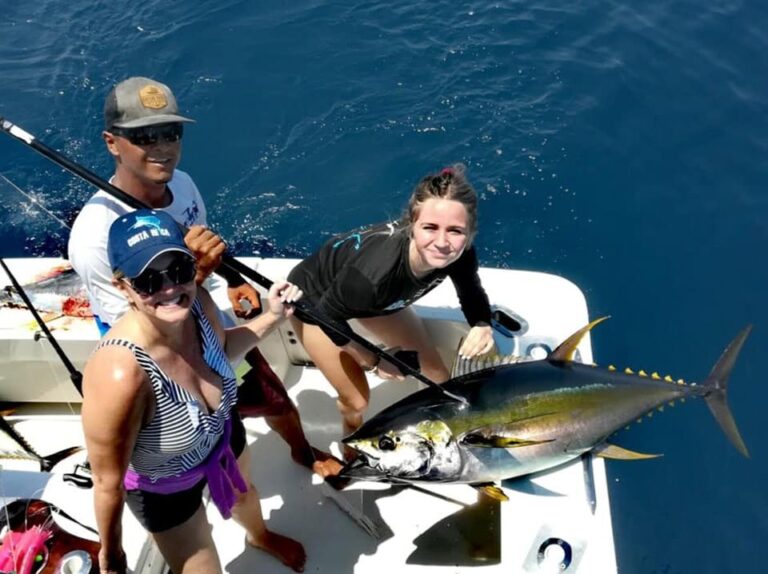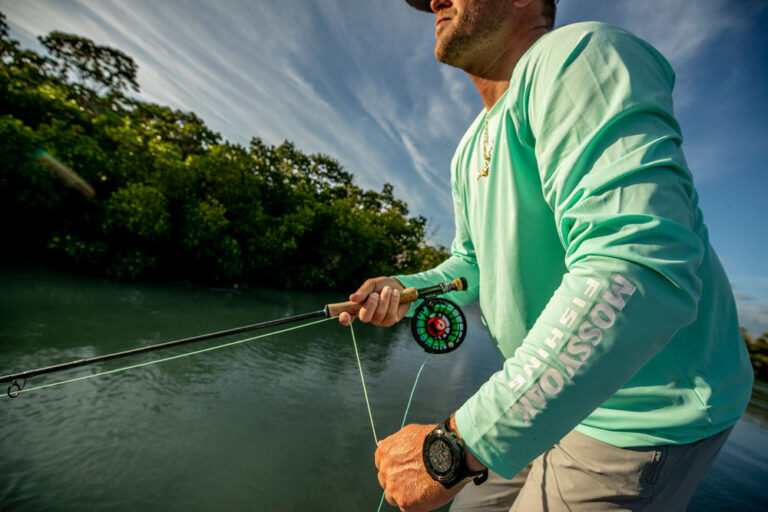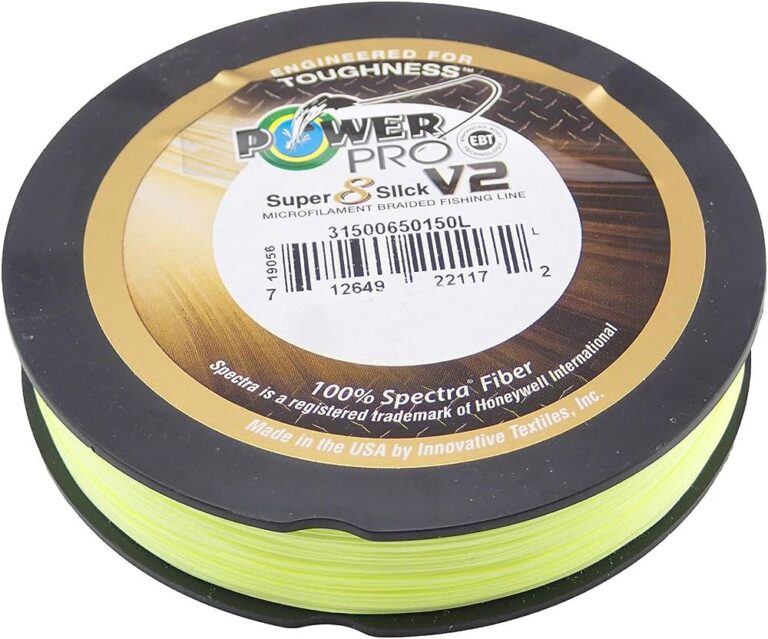To test if fishing line is still good, look for signs of damage or wear such as fraying or knots.

Credit: fishingbooker.com
Why Testing The Integrity Of Your Fishing Line Is Crucial
Importance Of Testing Fishing Line Strength
Ensuring the strength and integrity of your fishing line is crucial for a successful and enjoyable fishing experience. Testing your fishing line before hitting the water allows you to detect any weak points or damage that may compromise its performance.
By taking the time to test your fishing line, you can save yourself from potential frustrations and disappointments while out on the water.
Here are some key points to consider when understanding the importance of testing fishing line strength:
- Optimal performance: Fishing line that is in good condition will provide optimal performance, allowing you to cast with accuracy and control. Testing the strength of your fishing line ensures that it can handle the stress and strain of reeling in fish without breaking or unraveling.
- Avoiding breakage: A compromised fishing line is more prone to breakage, especially when faced with the resistance of battling a fish. By testing your fishing line, you can identify weak points and replace them before they lead to a snapped line and potentially lost fish.
- Confidence in tackling larger fish: If you enjoy pursuing larger fish species, it becomes even more important to test your fishing line. Testing allows you to gauge whether your line can handle the increased force and weight of bigger fish, giving you the confidence needed to engage in challenging angling adventures.
- Longevity of fishing line: Regularly testing your fishing line helps you identify signs of wear and tear. By addressing these issues promptly, you can extend the lifespan of your fishing line, saving you money in the long run.
Impact Of Compromised Fishing Line On Fishing Experience
Using a compromised fishing line can significantly impact your overall fishing experience. Whether it’s a frayed line, weak knots, or other forms of damage, here are some points to consider regarding the impact of compromised fishing line:
- Lost fish: A compromised fishing line is more likely to break when faced with the resistance of a hooked fish or when attempting to land it. This can result in losing the fish and potentially missing out on a trophy catch.
- Decreased casting distance and accuracy: Damaged fishing line can affect your casting distance and accuracy. Knots and weak spots can cause the line to tangle or break during a cast, leading to frustration and decreased success in reaching your desired fishing spots.
- Reduced sensitivity: A compromised fishing line can reduce your ability to feel bites and strikes. Weak areas can diminish the sensitivity of the line, making it harder to detect subtle movements or nibbles from fish.
- Safety concerns: A compromised fishing line poses safety risks, especially when dealing with larger fish species or fishing in challenging conditions. A sudden break in the line may result in injury if the line whips back towards you or others nearby.
By understanding the importance of testing fishing line strength and the consequences of compromised line, you can take proactive measures to ensure a more enjoyable and successful fishing experience. Regularly testing and maintaining your fishing line will ultimately contribute to your overall angling satisfaction.
So, before your next fishing trip, don’t forget to spend a few moments checking the integrity of your fishing line.
Common Signs That Your Fishing Line Needs Testing
Your fishing line is your lifeline when out on the water angling for that perfect catch. It’s crucial to regularly assess the condition of your fishing line to ensure optimal performance and prevent potential disappointments. Here are some common signs that indicate it might be time to put your fishing line to the test:
Visible Wear And Tear
If you notice any of the following visible signs of wear and tear on your fishing line, it’s essential to examine it more closely:
- Fraying or unraveling: Pay attention to any noticeable fraying or unraveling of the fishing line. This can weaken the line’s integrity and make it prone to snapping during your next fishing expedition.
- Abrasions or nicks: Inspect the line for any visible abrasions or nicks. These small imperfections can create weak spots in the line, compromising its strength and durability.
- Discoloration: If your fishing line shows signs of discoloration, such as fading or darkening, it may indicate uv damage. Exposure to sunlight can weaken the line over time, making it more susceptible to breakage.
Reduced Sensitivity And Bite Detection
The sensitivity of your fishing line is essential for detecting bites and subtle movements in the water. If you experience any of the following, it’s time to consider testing your fishing line:
- Reduced sensitivity: If you find that your fishing line has become less sensitive than before, you might struggle to detect the gentlest of nibbles. This decreased sensitivity can be attributed to the line’s age or damage.
- Lacks elasticity: A fishing line that has lost its elasticity can affect your ability to perceive subtle movements underwater. The line needs some level of stretch for both hook sets and play.
To accurately assess the sensitivity and bite detection abilities of your fishing line, consider utilizing the following testing methods:
- Tension test: Apply controlled tension to the line by pulling it gently. Evaluate how easily the line stretches and returns to its original state.
- Vibrational test: Run your fingers along the line to assess how well it transmits vibrations. A line with reduced sensitivity may struggle to relay even slight movements.
Frequent Line Breakages
Nothing is more frustrating than losing a fish due to a line breakage. If you notice an increase in line breakages, it’s crucial to examine your line’s condition:
- Review recent snag incidents: If you’ve encountered frequent snags or breakages due to line getting caught on underwater obstacles, it might be time to replace your fishing line.
- Evaluate line strength: Consider the pound-test rating of your fishing line. If you frequently catch fish near or exceeding this rating, you may need to upgrade to a stronger line.
- Test for line weaknesses: If you suspect your line is weak, it’s prudent to perform a stress test. Apply steady pressure to the line until it either breaks or exceeds its pound-test rating.
Regularly testing your fishing line’s condition and effectiveness can help prevent disappointments and lost catches. By keeping an eye out for visible wear and tear, reduced sensitivity, and frequent line breakages, you can ensure that your fishing line is always up to the task.
Remember, a well-maintained fishing line can greatly improve your chances of reeling in the big one!
Simple Tests To Determine The Condition Of Your Fishing Line
Keeping your fishing line in good condition is crucial for a successful and enjoyable fishing experience. Over time, fishing line can become weakened, waterlogged, or begin to fray, compromising its strength and performance. To ensure that your fishing line is still in good shape, there are several simple tests you can conduct.
These tests will help you assess its knot strength, smoothness, elasticity, water absorption, surface abrasions, strength under tension, and visibility. Let’s dive into these tests and how to perform them accurately.
The Knot Test
- Conducting a knot test is essential to evaluate the strength of your fishing line and ensure that it will hold up during a catch.
- Choose a sturdy knot, such as the improved clinch knot or the palomar knot, and tie it securely onto a hook or lure.
- Slowly apply pressure to the knot by pulling on the line with both hands.
- If the line breaks at the knot or shows signs of weakening, it’s an indicator that the fishing line may need to be replaced.
The Finger Test
- Run your fingers along the length of the fishing line to assess its smoothness.
- Pay close attention to any irregularities, fraying, or rough spots along the line.
- If you feel any bumps, inconsistencies, or notice frayed sections, it’s time to replace the fishing line.
The Stretching Test
- To evaluate the elasticity and strength of your fishing line, perform a stretching test.
- Hold the fishing line taut between your hands and apply slow, controlled tension.
- If the line stretches excessively or fails to regain its original form after tension is released, it may indicate weakened elasticity and the need for replacement.
The Water Test
- Submerge the fishing line in a container of water to assess its buoyancy and water absorption.
- A line that floats or shows minimal water absorption is in good condition.
- If the line sinks or becomes waterlogged quickly, it may indicate damage or material deterioration, requiring replacement.
The Abrasion Test
- Carefully examine the surface of your fishing line for any signs of abrasions, nicks, or damage.
- Move the line through your fingers or against a light-colored background to identify any irregularities.
- Even minor abrasions can weaken the line, compromising its strength and durability.
The Tension Test
- Applying controlled force on your line allows you to determine its strength and resilience.
- Gently increase the tension on the line until it reaches its breaking point.
- Remember to use caution and avoid excessive force to prevent potential damage or injury.
The Visibility Test
- Assessing the visibility of your fishing line is crucial as it can affect fish behavior.
- Take the line into different lighting conditions, such as direct sunlight or shaded areas, to determine its visibility against various backgrounds.
- Consider choosing fishing lines with low visibility colors to increase your chances of a successful catch.
By performing these simple tests on your fishing line, you can ensure that it remains in optimal condition. Regularly inspecting and maintaining your line will lead to more successful fishing trips and help you avoid potential disappointments. Remember to replace your fishing line when necessary to maintain its strength and reliability.
Tips For Maintaining And Extending The Lifespan Of Your Fishing Line
Your fishing line is an essential component of your fishing equipment. It is responsible for bearing the brunt of the weight and pressure as you reel in your catch. To ensure that your fishing line is in good condition and performs optimally, follow these tips for proper maintenance and extending its lifespan:
Proper Storage Techniques:
- Store your fishing line in a cool and dry place: Exposure to excessive heat and moisture can degrade the quality of the line. It is advisable to avoid leaving your fishing line exposed to direct sunlight for extended periods.
- Use line spools or holders: Keeping your fishing line neatly spooled on a reel or holder prevents it from tangling or becoming twisted, which can weaken its strength and effectiveness.
- Avoid storing your line in tight loops: Loosely coiling your fishing line helps to maintain its shape and prevents unnecessary stress on the line, thereby preserving its integrity.
Regular Cleaning And Maintenance:
- Rinse your line after each use: After a fishing trip, make it a habit to rinse your line with freshwater and gently wipe it down with a soft cloth or towel. This helps remove any dirt, debris, or salt particles that may have accumulated on the line during your outing.
- Inspect your line for damage: Regularly check your fishing line for nicks, frays, or abrasions. Running your fingers along the length of the line can help detect any signs of wear and tear. Replace damaged sections promptly to avoid potential line failure during your next fishing excursion.
Replacing Line When Necessary:
- Pay attention to line memory: Fishing line tends to develop memory over time, especially when repeatedly cast and reeled in. If you notice excessive coiling or the line doesn’t straighten out properly, it may be time to replace it. A line with memory can lead to tangling and reduced casting distance.
- Consider the age of your line: Fishing line has a limited lifespan. Over time, it can become brittle and lose its strength. It is advisable to replace your fishing line annually or whenever you notice a decrease in its performance.
- Choose the right line for the job: Different fishing techniques and conditions require specific types of fishing line. Using the appropriate line strength and material for your intended purpose will not only maximize your chances of a successful catch but also prevent unnecessary strain on your line.
By following these tips for maintaining and extending the lifespan of your fishing line, you can ensure that it remains in optimal condition and continues to perform well during your fishing adventures. Proper storage techniques, regular cleaning and maintenance, and timely replacement of worn-out line are key to keeping your fishing line at its best.
Conclusion
Understanding how to test if your fishing line is still good is essential for every angler. By regularly inspecting the line for signs of wear and tear, such as fraying or discoloration, you can prevent losing the big catch due to a sudden line break.
Additionally, learning the different methods of testing the line’s strength, such as the “thumb test” or the “knot test”, will allow you to gauge its reliability for future fishing trips. Remember to replace the line if it shows any signs of damage, as using a compromised line can lead to lost fish and frustration.
With proper care and regular checks, you can ensure that your fishing line remains in optimal condition, increasing your chances of success on the water. So, take the time to put these tips into practice and make the most out of your next fishing adventure.
Happy fishing!





